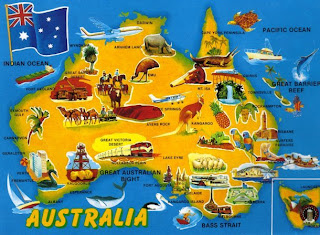 For many thinking of immigration, Australia is one of the most common places that comes into mind. In fact, there are thousands of people who travel and settle to the country yearly. However, this wave of immigration into the country is not a modern event. The truth is that it is going on for centuries now.
For many thinking of immigration, Australia is one of the most common places that comes into mind. In fact, there are thousands of people who travel and settle to the country yearly. However, this wave of immigration into the country is not a modern event. The truth is that it is going on for centuries now.
The first immigrants to Australia were the Aborigines, who reached the land more than 50,000 years ago. These people came from Southeast Asia and traveled on foot to Australia via the massive land bridges that existed during those times. They then scattered all over the land and became the continent's first settlers.
Though there might have been other travelers to the continent during the past, as suggested by some studies, there was no known significant movement into Australia after the Aboriginal migration, until the arrival if the British in the 17th century. This was accomplished with the historic expedition of Captain James Cook, which also opened further European travel to the continent.
The British intended to make the continent a new penal colony for convicts. Since the seas were the only means of transport for them during those periods, the journey takes anywhere from several months to four years. Often, many of the convicts that were being transported died during this long journey. Those that were able to make it were then sent to work as laborers in the plantations being established there. There where are also free men who traveled to Australia during these period, though they were not that numerous, mainly due to the high cost of travel.
The Gold Rush period, which begun in 1851, produced the first big wave of immigrants to Australia , as thousands try to seek opportunities in the country. The people who traveled to Australia were not only limited to the British, as those coming from other European countries, like Germany and Ireland, as well as the Chinese, joined in. Also, the Australian government had began a campaign to encourage immigration during this period.
In the early twentieth century, the emerging economy of the country proved attractive to many people from both the United States and Europe, as well as Asia. The war periods, meanwhile, brought in massive numbers of refugees, as thousands flee war torn Europe. In the 1970's, the Vietnam war also brought in a large number of refugees, as many Vietnamese flee the conflict in the country, as well as people coming from nearby Laos and Cambodia, which were also affected by the war operations.
Today, immigration in the country is still in high numbers, as many people from all over the world choose to move to Australia.
Image reference: http://www.janesoceania.com/tourism/australia/ausmap_gc.jpg
A Brief History Of Travel To Australia
Subscribe to:
Post Comments (Atom)
About this blog
Provides articles and resources for your family or your partner to migrate, work, and live in Australia.
Archives
-
▼
2010
(59)
-
▼
March
(8)
- The Australian Dress Style
- Australians' Love Of Sports Showcased In Winter Ol...
- Some Interesting Facts You Should Know About Austr...
- What It's Like Living In New South Wales
- Easy Tourist Accommodations Tips
- Sailing To Australia In The 1800's
- A Brief History Of Travel To Australia
- The Australian Transportation Network
-
▼
March
(8)
Labels
- australia tourist visa (4)
- australia visa application (8)
- australia visas (10)
- australia visitor visa (10)
- australian business visa (2)
- australian eta visa (7)
- australian immigration (14)
- australian immigration information (23)
- australian temporary visa (3)
- australian travel visa (14)
- australian visitor visa (5)
- australian work visa (1)
- australian working holiday visa (2)
- eVisitor visa (2)
- immigration australia (14)
- job in australia (2)
- migration to australia (17)
- work in australia (3)




0 comments:
Post a Comment